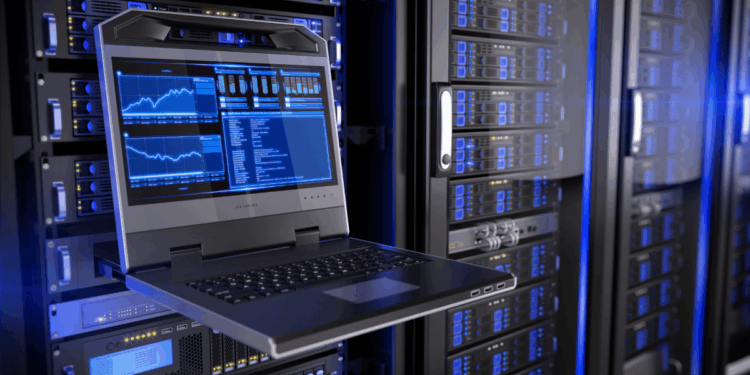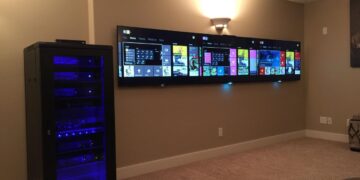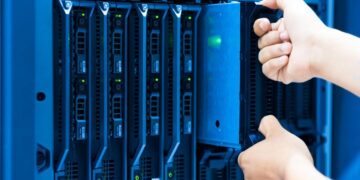In the digital era, data is the new currency, and the ability to process, analyze, and serve it at lightning speed is the ultimate competitive advantage. For enterprises, data centers, and advanced users, a high-performance server is not a luxury; it is the fundamental building block of their entire digital infrastructure. These are not your average computers; they are meticulously engineered machines designed to handle immense workloads, from complex data analytics and artificial intelligence to high-frequency financial trading and large-scale virtualization. The high-performance server landscape in 2025 is a complex ecosystem of powerful components, specialized hardware, and advanced cooling technologies.
This comprehensive guide delves into the intricate world of high-performance servers, providing a detailed breakdown of the key components, form factors, and strategic considerations that define the top tier of server technology. We will explore the latest advancements in processors, memory, and storage, and examine how these technologies come together to power the most demanding applications on the planet. Whether you are an IT professional tasked with building a new data center, a data scientist seeking to accelerate your machine learning models, or a business owner looking to scale your infrastructure, this guide will provide you with the knowledge to make an informed decision and invest in a server that will deliver unparalleled performance and reliability.
The Pillars of High-Performance Servers
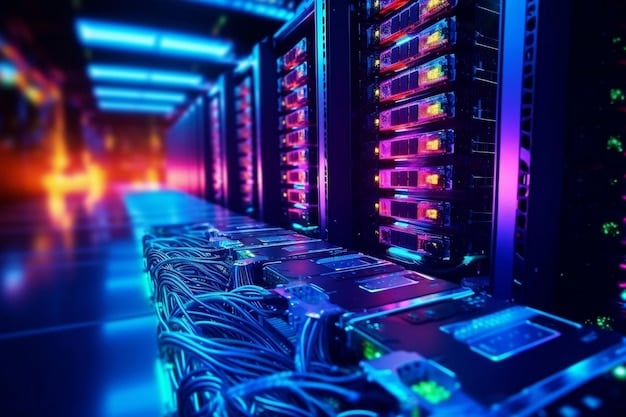
A high-performance server is an integrated system where every component is optimized to work together in perfect harmony. It’s not just about one powerful part, but about a balanced architecture that prevents any single component from becoming a bottleneck.
A. Raw Processing Power: The CPU
The Central Processing Unit (CPU) is the brain of the server, and in 2025, the market is dominated by two titans: Intel and AMD.
- Intel Xeon Scalable Processors: Intel continues to be a dominant force, particularly in enterprise environments where their platform stability and extensive software compatibility are highly valued. Their latest generations of Xeon processors are optimized for a wide range of workloads, offering a balance of high core counts, robust security features, and powerful integrated accelerators for AI and analytics.
- AMD EPYC Processors: AMD has become a major contender, known for its processors with extremely high core counts and a massive number of PCIe lanes. This makes them ideal for workloads that can be highly parallelized, such as scientific computing, virtualization, and big data analytics. The high core count per CPU often allows for a more efficient server architecture, potentially reducing the number of physical servers needed.
The choice between Intel and AMD often comes down to the specific workload. Intel is a safe and reliable choice for most general-purpose applications, while AMD shines in environments that can fully utilize its high core count and expanded I/O capabilities.
B. Massive Memory and Bandwidth: The RAM
The amount and speed of a server’s Random Access Memory (RAM) are crucial for high performance, especially for in-memory databases, virtualization, and large-scale data processing.
- Capacity: High-performance servers can support hundreds of gigabytes, or even terabytes, of RAM. This is essential for applications that need to hold entire datasets in memory to achieve ultra-fast processing speeds.
- Error-Correcting Code (ECC) RAM: All high-performance servers use ECC RAM. This technology detects and corrects single-bit memory errors, preventing data corruption and system crashes. This is a non-negotiable feature for any mission-critical application.
- Speed and Channels: The latest memory standards, like DDR5, offer a significant boost in speed and bandwidth. The number of memory channels (the data pathways between the CPU and RAM) also directly impacts performance. Modern server CPUs support a high number of memory channels to ensure the CPU is never waiting for data from the RAM.
C. Ultra-Fast Storage: The Data Pipeline
A powerful CPU and massive RAM are useless if the data they need to work on is stored on a slow drive. High-performance servers rely on storage solutions that can deliver data at blistering speeds.
- NVMe (Non-Volatile Memory Express): NVMe is the gold standard for high-performance storage. Unlike older SATA and SAS interfaces, NVMe connects directly to the CPU’s PCIe lanes, providing exponentially faster I/O speeds and lower latency. NVMe SSDs are essential for databases, virtualization hosts, and any application that performs frequent read/write operations.
- RAID for Performance and Redundancy: While RAID (Redundant Array of Independent Disks) is often associated with data redundancy, it is also a powerful tool for boosting performance. By striping data across multiple drives, RAID levels like RAID 0 and RAID 10 can dramatically increase read and write speeds.
- Storage Tiers: Many high-performance setups use a tiered storage approach. Ultra-fast NVMe drives are used for the most frequently accessed data (hot data), while larger, more cost-effective HDDs (Hard Disk Drives) are used for bulk storage (cold data).
D. High-Speed Networking:
A server’s performance is only as good as its network connection. In a clustered environment, data is constantly being moved between servers.
- 10GbE, 25GbE, and Beyond: 1-Gigabit Ethernet (1GbE) is no longer sufficient. High-performance servers typically use 10GbE as a baseline, with 25GbE and even 100GbE becoming increasingly common for HPC, AI, and big data clusters.
- Low Latency: For applications like high-frequency trading, where every microsecond counts, low latency networking is crucial. Technologies like Remote Direct Memory Access (RDMA) allow servers to access each other’s memory directly, bypassing the CPU and significantly reducing latency.
Server Form Factors and Their Ideal Workloads
The physical design of a server, known as its form factor, is chosen to match a specific environment and workload.
A. Rack Servers: The Data Center Workhorse
Rack servers are the most common form factor in data centers. They are flat, rectangular servers designed to be mounted in a standard 19-inch equipment rack.
- Versatility: They are available in a wide range of configurations, from simple 1U servers to massive 4U monsters, and can be customized with various CPUs, RAM, and storage options. This makes them suitable for a diverse set of workloads, from web hosting and databases to virtualization and analytics.
- Scalability: A rack full of servers can be easily scaled by adding more units, making them a flexible and highly scalable solution for growing businesses.
B. Blade Servers: The High-Density Solution
Blade servers are thin, modular servers that slide into a shared chassis. The chassis provides shared components like power, cooling, and networking, reducing the number of cables and power supplies needed.
- Efficiency: Blade servers are incredibly space- and power-efficient, making them ideal for high-density computing environments. They can pack a large amount of computing power into a small footprint.
- Best for Uniform Workloads: Blade servers are a great choice for large, uniform workloads, such as a virtualization farm or a dedicated application environment where many identical servers are needed.
C. High-Density Servers and Specialized Systems:
For extreme workloads, specialized high-density servers pack multiple server nodes (each with its own CPU and RAM) into a single chassis.
- HPC and AI: These systems are designed for High-Performance Computing (HPC) and Artificial Intelligence. They are optimized for parallel processing and are often liquid-cooled to manage the immense heat generated by powerful components like GPUs.
High-Performance Server Use Cases
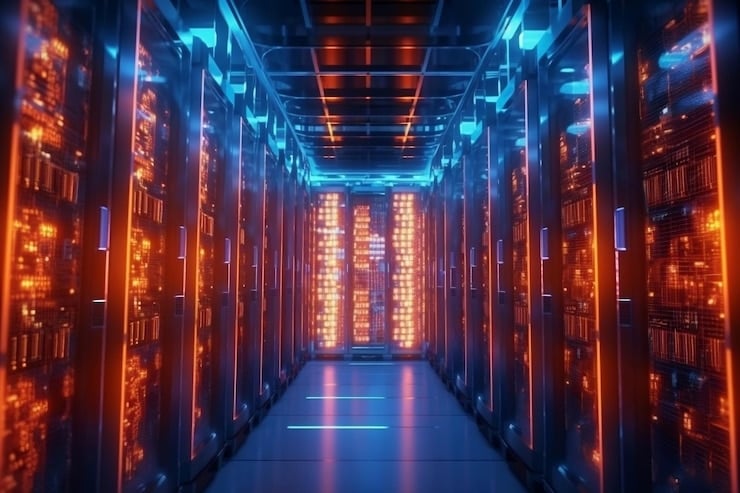
A high-performance server is a tool for a specific job. Here are some of the most common applications that demand this level of power.
A. Artificial Intelligence (AI) and Machine Learning (ML):
AI and ML models require an immense amount of computational power to train and infer. This has led to the rise of specialized servers equipped with powerful GPUs (Graphics Processing Units).
- The Role of GPUs: GPUs are highly parallel processors, making them perfect for the massive number of matrix and vector calculations required for deep learning. NVIDIA’s A100 and H100 GPUs are the industry standard for this kind of work, and servers are now built specifically to house and cool these powerful cards.
- Data Science: Data scientists use these servers to accelerate the processing of large datasets, run complex simulations, and train sophisticated machine learning models in a fraction of the time it would take on a standard server.
B. Big Data Analytics:
The world generates an ever-increasing volume of data. High-performance servers are the foundation for big data analytics platforms like Apache Hadoop and Spark.
- Server Requirements: These servers need a balanced architecture with powerful multi-core CPUs for processing, massive amounts of RAM for in-memory computations, and fast storage for rapid data access.
- The Need for Speed: Analyzing large datasets in a timely manner provides a competitive edge, allowing businesses to gain real-time insights from their data and make faster, more informed decisions.
C. Virtualization and Cloud Infrastructure:
High-performance servers are the physical hardware that powers public and private clouds. A single physical server can host dozens or even hundreds of virtual machines (VMs) or containers, each running a different application.
- Hypervisor: The server runs a hypervisor (like VMware ESXi, Microsoft Hyper-V, or Proxmox) that allocates and manages the server’s resources for each VM.
- Consolidation: This allows businesses to consolidate many older, less-efficient servers onto a single, powerful machine, reducing power consumption, cooling costs, and management overhead.
D. High-Frequency Trading (HFT):
In the world of finance, milliseconds can mean millions of dollars. HFT firms use high-performance servers to execute trades at sub-millisecond speeds.
- Latency is Everything: These servers are optimized for ultra-low latency, often using specialized networking hardware and operating systems tuned for maximum speed.
- Physical Proximity: These servers are often co-located in data centers as close as possible to the stock exchange’s servers to reduce the physical distance data has to travel.
The Build vs. Buy Debate in the High-Performance Context
For high-performance servers, the decision to build a custom machine or buy a pre-configured one from a major vendor is a major strategic consideration.
A. Buying from Major Vendors (Dell, HP, Lenovo):
- Pros:
- Warranty and Support: Enterprise vendors offer comprehensive warranties and 24/7 technical support. This is invaluable for mission-critical systems.
- Proven Reliability: These servers are rigorously tested and certified to work with a wide range of software and hardware, ensuring stability and compatibility.
- Streamlined Deployment: They come pre-configured and ready to deploy, saving time and effort.
- Cons:
- High Cost: You are paying a significant premium for the brand name, warranty, and support.
- Limited Customization: While there are many configuration options, you are limited to the components and designs offered by the vendor.
B. Building a Custom High-Performance Server:
- Pros:
- Total Control: You have complete control over every component, from the motherboard and CPU to the cooling system. This allows you to build a server perfectly tailored to a very specific workload.
- Cost-Effective: You can save a considerable amount of money by sourcing components yourself.
- Niche Components: This is the only way to integrate highly specialized hardware, such as a custom FPGA or a unique network card.
- Cons:
- Requires Expertise: This requires a deep understanding of server hardware and a significant time investment in research, assembly, and testing.
- No Warranty or Support: If a component fails, you are responsible for troubleshooting and replacing it yourself.
- Testing and Validation: You are responsible for ensuring all components work together seamlessly, which can be a complex and time-consuming process.
Advanced Server Management and Cooling
The performance of a server is not just about its components; it’s about how they are managed and cooled.
A. Remote Management (iDRAC, iLO):
High-performance servers from major vendors come with advanced remote management tools like Dell’s iDRAC (Integrated Dell Remote Access Controller) and HP’s iLO (Integrated Lights-Out). These tools allow you to manage the server remotely, even if it is powered down. You can monitor its health, update its firmware, and troubleshoot issues from anywhere in the world.
B. Advanced Cooling Solutions:
The immense power of modern server components generates a significant amount of heat.
- Air Cooling: While traditional air cooling is still the standard, high-performance servers often use a combination of powerful fans and heat sinks to manage thermal output.
- Liquid Cooling: For extremely high-density and high-performance systems, liquid cooling is becoming a necessity. Systems use a closed-loop system of coolant to transfer heat away from the components, allowing them to operate at peak performance for longer periods without throttling.
Conclusion
Choosing and deploying a high-performance server in 2025 is a strategic decision that goes beyond simple hardware specifications. It is an investment in the foundational infrastructure that will power your most demanding applications, accelerate your data-driven insights, and provide a competitive edge in a world where speed and reliability are paramount. The days of a “one-size-fits-all” server are gone; today’s high-performance servers are specialized machines, meticulously engineered to excel at specific tasks, whether it’s training an AI model, running a large virtualization cluster, or performing lightning-fast financial transactions.
The modern high-performance server is a symphony of cutting-edge technology, from the multi-core processors of Intel and AMD to the blazing-fast NVMe storage and the ever-growing capacity of DDR5 memory. The most significant shift is the increasing importance of specialized hardware, particularly GPUs and other accelerators, which have become indispensable for AI and machine learning workloads. This specialization, combined with advancements in high-speed networking and advanced cooling, has pushed the boundaries of what is possible in a single machine or a data center.
Ultimately, the choice to buy a pre-built server from a major vendor or build a custom one yourself comes down to a trade-off between convenience and control. Major vendors provide a secure, reliable, and well-supported solution with a warranty, ideal for businesses that prioritize stability and minimal management overhead. Building your own offers unparalleled flexibility, cost savings, and the ability to fine-tune every aspect of the system, a path often chosen by researchers and tech-savvy organizations with a deep understanding of their unique workload requirements. Regardless of the path you choose, understanding the core principles of high-performance computing—prioritizing a balanced architecture, investing in key components like ECC RAM and fast storage, and planning for proper cooling and remote management—is the key to ensuring your investment delivers maximum performance and unwavering reliability for years to come.

